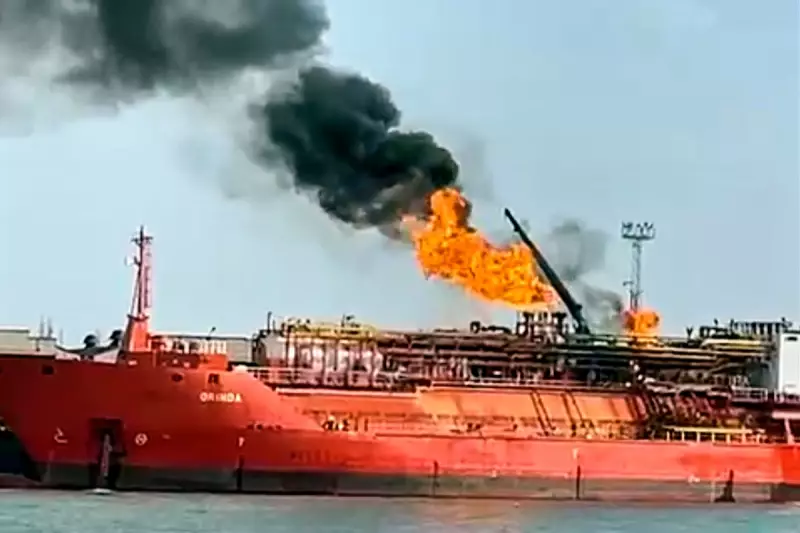
Europe stands on a perilous new frontier. A sustained campaign of Russian hybrid warfare, comprising drone incursions, jet violations, and acts of sabotage, is pushing the continent towards a physical confrontation with NATO, security experts warn.
A Trail of Sabotage and Terror
The Kremlin's shadow war escalated dramatically this week. Romania was forced to evacuate villages along its border following a Russian drone assault on a Turkish-flagged liquefied petroleum gas tanker near Ukrainian port infrastructure in Izmail. Footage of the vessel engulfed in flames circulated globally, a stark visual of the conflict's creeping reach.
Simultaneously, Poland is reeling from what its security ministry describes as an "unprecedented act" of sabotage. A bomb detonated on the crucial Warsaw to Lublin railway line, a main artery for military and aid supplies into Ukraine. A separate attack on the same route involved physically cutting the rails. Polish Prime Minister Donald Tusk, pointing the finger at two Ukrainians allegedly collaborating with Russia, acknowledged the severity, though analysts note such provocations are becoming grimly routine.
These are not isolated incidents. In September, Poland was penetrated by at least 23 Russian drones. While unarmed on that occasion, their one-way flight path designates them as kinetic bombs, not mere reconnaissance tools.
The Scale of Russia's Covert Campaign
A report from the Centre for International and Strategic Studies, dated March 2025, quantifies the alarming breadth of this offensive. It documents at least 70 known acts of sabotage across Europe attributed to Russia since the full-scale invasion of Ukraine in 2022.
The analysis reveals a clear pattern: 27% of attacks targeted transportation like trains and planes, another 27% hit government and military targets, while 21% focused on critical infrastructure such as pipelines and the electricity grid. A further 21% were aimed at industry, often with links to Western aid for Ukraine.
Tactics are diverse, ranging from explosives and incendiaries to physical violence, undersea cable tampering, and the weaponisation of migrants. Former UK Security Minister Tom Tugendhat minced no words, stating the attack on the gas tanker was tantamount to Russia "attacking NATO" and labelling Moscow a "state sponsor of terrorism."
NATO's Dilemma: Coyness or Confrontation?
Despite the provocations, NATO's response has been measured. This stands in contrast to domestic actions, such as the UK's designation of Palestine Action as a terrorist organisation for non-violent paint attacks. Meanwhile, Russian agents operating on British soil, implicated in plots including an arson attack on a Ukrainian business and a plan to kidnap a London restaurateur, have not faced equivalent terrorism charges.
The strategic calculus is complex. Nations like France are in talks to supply Ukraine with 100 Rafale fighter jets, and Europe has collectively stepped up military support to counterbalance Donald Trump's decision to halt US aid. Yet, the direct attacks on a NATO member like Poland, a frontline state, signal a bold escalation from the Kremlin.
As these hybrid attacks mount—from airspace violations over Estonia to cyber offensives and social media propaganda—the pressure on NATO to move beyond rhetoric and consider a physical pushback grows ever more intense. The line between shadow war and open conflict is becoming dangerously thin.





